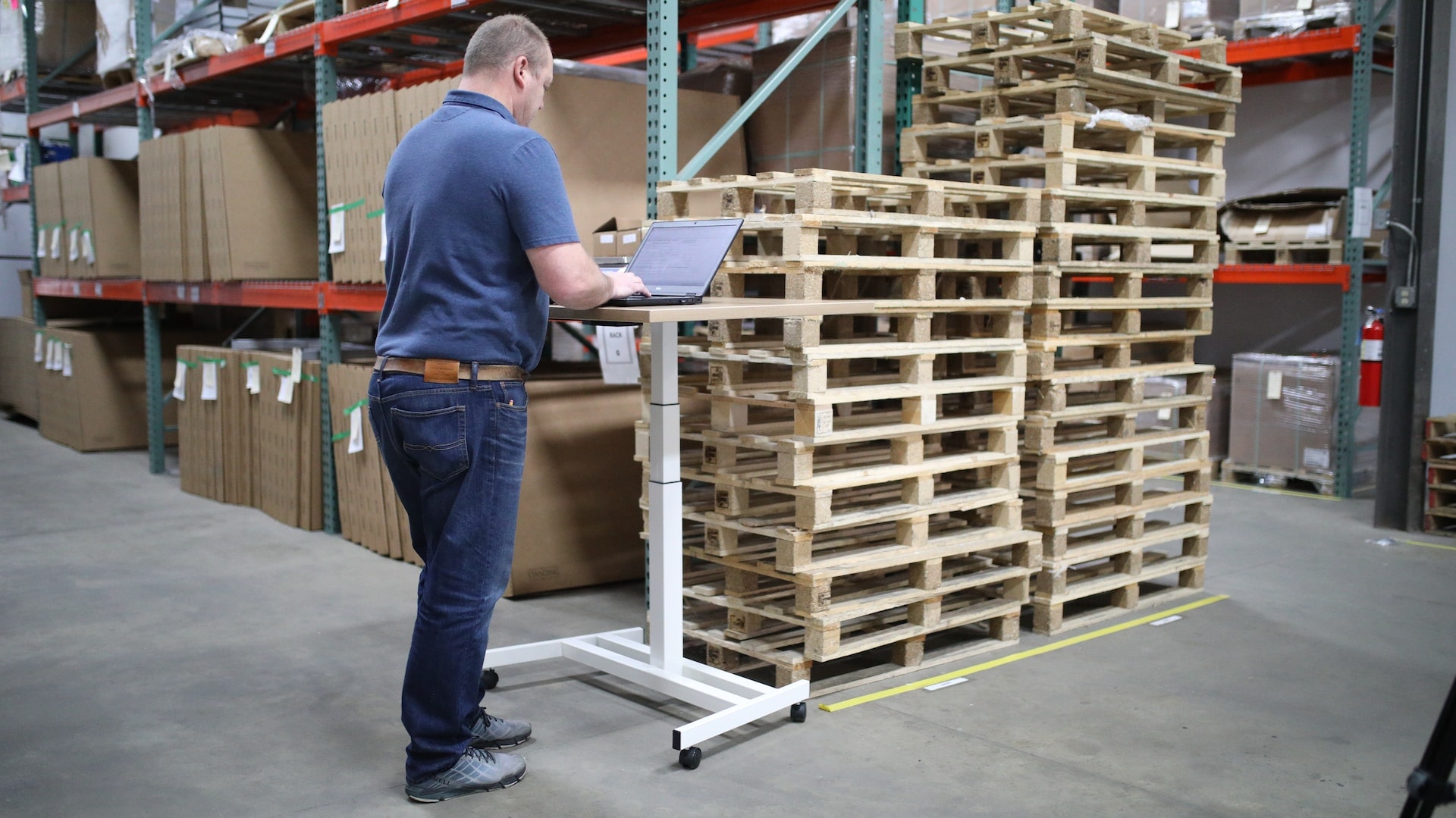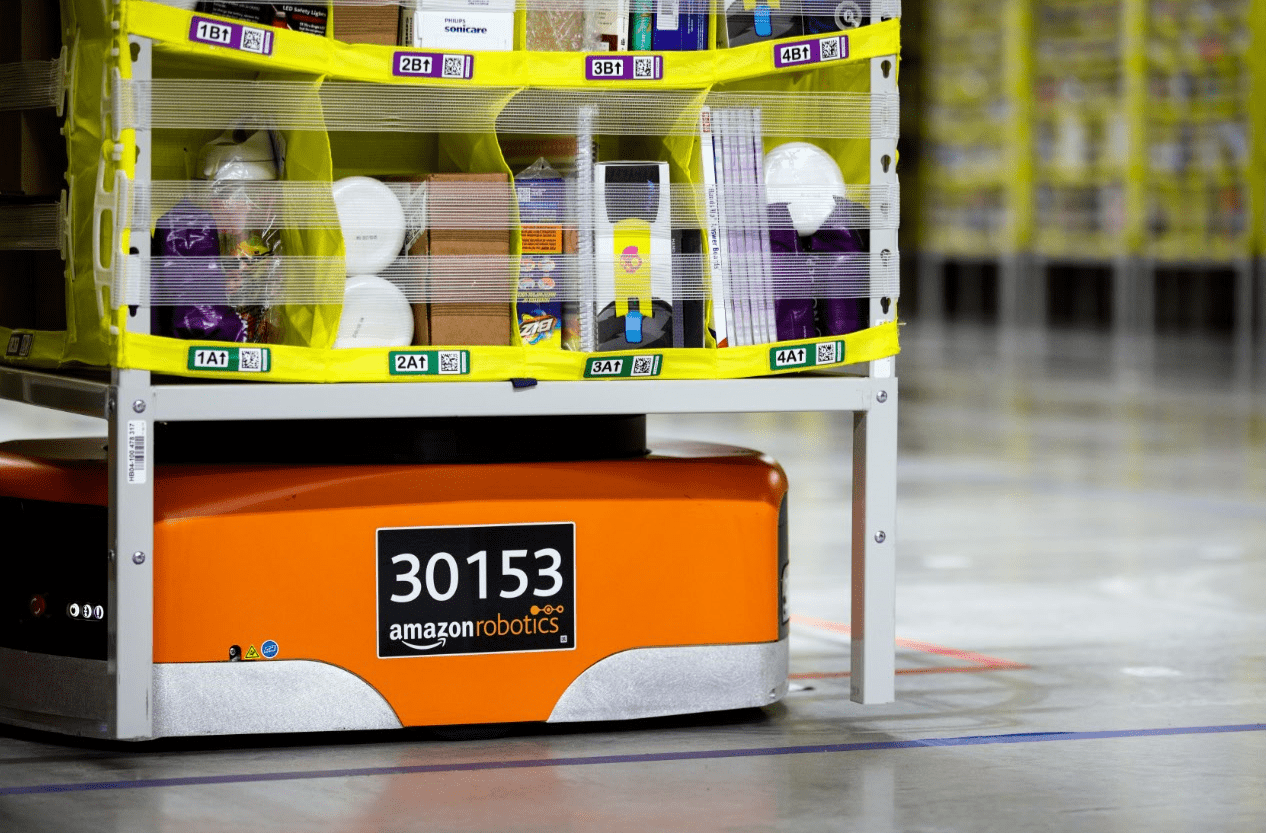
Warehouse Efficiency: Your Path to Elevated Profits and Boosted Growth
The logistics market has seen 29% growth in 2022, and this upward trend shows no signs of slowing down. However, not all businesses will be able to harness this projected growth. The ones that stand to reap the rewards are those who make efficiency and modernization their top priorities.
Much like ecommerce accounting, accuracy and efficiency are the very essence of a successful warehouse operation. In a world where consumer demands soar, the role of warehouse efficiency has taken on paramount importance. The pressure to meet ever-escalating customer expectations has reached a tipping point. This makes optimizing warehouse operations a defining factor in the triumph and expansion of ecommerce ventures.
In this guide, we delve into the profound impact of warehouse efficiency on the ecommerce ecosystem, exploring how it can lead businesses toward remarkable success in the digital age. Let’s dig in!
Table of Contents
Find an ecommerce accountant
The A2X Directory is a global network of expert ecommerce accountants ready to help businesses like yours.
Take me there
The impact of ecommerce growth on warehousing

The ecommerce industry has experienced a phenomenal surge in recent years—consumers increasingly turn to online platforms for their shopping needs.
This surge in digital commerce has undoubtedly revolutionized the retail landscape, but it has also put immense pressure on warehouse facilities. Traditional brick-and-mortar retail relied on a slower pace of order fulfillment, but ecommerce has transformed customer expectations, demanding lightning-fast deliveries.
Surge in order volume
One of the most apparent effects of ecommerce growth on warehouses is the rise in order volume. As businesses extend their reach to a global audience and consumers grow accustomed to the convenience of online shopping, the influx of orders has skyrocketed. This upswing in demand has necessitated the adaptation of warehousing strategies to cope with the sheer scale of inventory turnover.
To effectively manage this exponential increase in order volume, warehouses must embrace automation and advanced inventory management systems. Automated processes can significantly reduce errors, streamline order processing, and enhance efficiency.
Implementing cutting-edge technology, such as robotic order pickers and automated conveyor systems, can expedite order fulfillment and ensure timely deliveries. These systems also integrate seamlessly with accounting tools like A2X to help record, sort, and track orders in bulk volume.
Need for faster order fulfillment
In ecommerce, time is of the essence—customers now expect swift order fulfillment and prompt deliveries. Meeting these expectations is paramount for customer satisfaction and retention.
With the advent of same-day and next-day delivery options, businesses are under immense pressure to optimize their warehouse operations to ensure speedy order processing. To address the need for faster order fulfillment, warehouses must adopt a multi-faceted approach.
Firstly, strategic warehouse layout optimization can reduce the time to pick and pack items, cutting the overall processing time. Additionally, employing predictive analytics can aid in demand forecasting. It enables businesses to proactively position inventory closer to high-demand areas, reducing transit time. Implementing a pick-to-light or voice-assisted picking system can enhance accuracy and speed, ensuring that customers receive the right products on time.
Such streamlined warehouse operations positively impact ecommerce accounting processes, particularly in the context of the need for faster order fulfillment. This impact is rooted in the interconnected nature of business operations, where operational efficiency translates into financial benefits.
Challenges in warehouse efficiency

The role of warehouse efficiency has evolved from a mere operational concern to a strategic driver of financial benefits, ecommerce growth, and expansion. The seamless functioning of warehouses is now paramount in determining the success of businesses venturing into modern digital retail. However, achieving efficient warehousing is not without its difficulties and obstacles.
Let’s examine some of the common challenges that affect warehouse efficiency and explore how ecommerce businesses can identify and tackle these issues to foster exceptional growth:
Inventory management complexities
Inventory management is a balancing act that demands keen attention to detail and seamless coordination. Accurate inventory management not only prevents overstock and stockouts but also plays a significant role in optimizing cash flow and maximizing profits. However, inventory complexities escalate as businesses expand their product offerings and cater to varying customer preferences.
The essence of inventory management lies in maintaining optimum stock levels and preventing stockouts while avoiding excessive inventory carrying costs. Many warehouses grapple with inaccurate demand forecasting, leading to misjudged stock levels and frequent inventory stockouts. However, businesses can easily circumvent this catastrophe with the right ecommerce accounting strategies and tools like A2X.
How to overcome inventory management complexities?
- Implement inventory management software: Invest in robust inventory management software that integrates with an existing warehouse management system. This software can efficiently track stock levels, manage reorder points, and automate restocking processes based on demand forecasts, reducing the risk of stockouts. Even if you’re taking advantage of Amazon’s FBA (Fulfillment by Amazon) service, which provides built-in storage, utilizing an inventory management system is still essential. This will help businesses maintain stock levels, optimize profits, and improve margins.
- Adopt Just-In-Time (JIT) inventory approach: Applying JIT principles helps warehouses optimize inventory levels by receiving goods only when needed, minimizing excess inventory and associated holding costs.
- Establish collaborative supplier relationships: Forge strong partnerships with reliable suppliers to ensure a steady inventory flow, enabling quick replenishment when needed and avoiding disruptions in the supply chain.
Labor and workforce constraints
The backbone of any warehouse operation is its workforce. Strategically managing the workforce not only boosts productivity but also contributes to better financial performance through reduced turnover costs and improved operational efficiency.
However, labor and workforce constraints have become a significant challenge for many warehouses. Fluctuating demands, seasonal peaks, and the need for specialized skills create complexities in workforce management.
Recruitment and retention of skilled workers are ongoing concerns as warehouses compete for talent in a competitive job market. Moreover, the job’s physical demands can lead to higher turnover rates and potential work-related injuries, affecting overall productivity.
How to overcome labor and workforce constraints?
- Invest in employee training and development: Provide comprehensive training programs to improve the workforce’s skill sets. Upskilling employees not only improves job satisfaction and productivity but also mitigates inefficiencies and turnover-induced financial strains.
- Implement safety measures: Prioritize employee safety by enforcing strict safety protocols, providing appropriate safety gear, and ensuring ergonomic workstations. A safe and comfortable work environment promotes employee well-being and reduces the risk of accidents.
- Offer incentive programs: Reward high-performing employees with incentive programs recognizing their efforts and motivating others to excel. Incentives can foster a culture of excellence and boost overall workforce morale.
Space utilization and layout optimization
Smaller warehouse space can be a major bottleneck for efficiency. Inefficient space utilization leads to congestion, reduced throughput, and difficulty locating products promptly.
Warehouses must carefully strategize their layout design to maximize available space, facilitate streamlined processes, and minimize unnecessary movement. Optimizing warehouse space not only improves operational flow but also allows businesses to utilize their resources effectively. This efficient space usage ultimately reduces operational costs, improves margins, and directly impacts profitability.
However, retrofitting an existing warehouse for optimal space utilization can be a challenging and costly endeavor. Despite the potential benefits, the need for structural modifications, equipment upgrades, and workflow adjustments can strain budgets and disrupt operations. Careful planning and phased implementation are essential to minimize financial burdens while achieving long-term efficiency gains.
How to overcome space utilization and layout optimization challenges?
- Conduct space utilization audits: Regularly assess the warehouse layout to identify inefficiencies and opportunities for improvement. Data-driven audits can reveal underutilized spaces, helping managers make informed decisions for optimization.
- Implement vertical storage solutions: Utilize vertical space by incorporating tall storage racks and mezzanine floors to store goods vertically and free up floor space for smoother material flow.
- Embrace automation: Automate certain warehouse processes, such as picking and sorting, with the help of advanced robotics and conveyor systems. Automation not only optimizes space but also improves order accuracy and throughput.
- Invest in new Warehousing Facilities: Sometimes, it is worth investing in a new warehouse rather than trying to retrofit an existing one. This is also a situation where Warehousing and Fulfillment could help. Warehousing and Fulfillment helps ecommerce businesses find warehousing facilities quickly, swiftly, and efficiently.
4 key strategies for improving warehouse efficiency

Once viewed as a logistical aspect, warehouse efficiency now stands as a cornerstone of successful ecommerce ventures. Beyond mere logistics, optimizing warehouse operations is pivotal in enhancing financial benefits, catalyzing ecommerce growth, and facilitating business expansion.
Let’s explore actionable strategies that businesses can adopt to streamline their warehousing processes and unlock continued growth:
Implementing advanced technologies
Improving warehouse efficiency can significantly impact overall business performance and profitability. Advanced technologies can have a considerable impact on achieving this goal. By leveraging IoT, AI, and ecommerce platform apps, businesses can optimize warehouse operations and streamline ecommerce accounting processes.
Below are some key technologies and strategies that can be implemented to enhance warehouse efficiency:
- Internet of Things (IoT) and sensors: Deploy IoT devices and sensors throughout the warehouse to gather real-time data on various aspects, such as inventory levels, equipment utilization, and environmental conditions. IoT-enabled devices can provide insights to optimize storage space, monitor equipment health, and enhance safety measures.
- Machine learning and artificial intelligence (AI): Utilize AI and machine learning algorithms to study historical data, predict demand patterns, and optimize inventory levels. AI-driven systems can also aid in dynamic routing, intelligent order picking, and demand forecasting, leading to more efficient warehouse operations.
- Augmented reality (AR) and wearable devices: AR technology can assist warehouse workers by providing visual instructions and information through smart glasses or mobile devices. It enhances picking accuracy, reduces training time for new employees, and minimizes errors during order fulfillment.
- Cloud computing: Leverage cloud-based solutions to centralize data storage, streamline communication, and enable access to critical warehouse information from anywhere. Cloud platforms offer scalability and data security and facilitate seamless integration between systems.
- Continuous improvement and data analytics: Regularly analyze warehouse performance data and gather insights to identify bottlenecks, inefficiencies, and areas for improvement. Use these findings to implement continuous improvement strategies that enhance overall warehouse efficiency.
Leveraging these technologies not only enhances customer experiences but also leads to cost savings and increased profitability.
Introducing automation and robotics
Warehouses are crucial in the supply chain, providing storage, distribution, and fulfillment hubs. To meet the growing demands of modern commerce and maintain a competitive edge, warehouse operators are increasingly turning to automation and robotics. These technologies have revolutionized the warehousing industry, enabling businesses to significantly improve efficiency, margins, and accuracy while reducing operational costs and human errors.
Below are some key automation and robotics technologies that can be implemented to enhance warehouse efficiency:
- Automated storage and retrieval systems (AS/RS): AS and RS are a cornerstone of modern warehouse automation. These systems use robotic cranes or shuttles to efficiently store and retrieve products from high-density racks. AS/RS minimizes the need for human intervention, reduces picking times, and optimizes storage space by utilizing the warehouse’s vertical height.
- Goods-to-Person (G2P) systems: Traditionally, workers would traverse the warehouse to retrieve items for order fulfillment, resulting in time inefficiencies. Goods-to-Person systems streamline this process by bringing the items directly to the workers. Robots or automated shuttles transport shelves or bins to the selectors, enabling them to fulfill orders more quickly and with fewer footsteps.
- Autonomous Mobile Robots (AMRs): These are versatile and flexible robots that can navigate the warehouse autonomously. They can transport goods, deliver inventory to picking stations, and collaborate safely and efficiently with human workers. AMRs are equipped with sensors, cameras, and advanced algorithms to avoid obstacles and adapt to changes in the warehouse environment.
- Collaborative Robots (Cobots): These are designed to work alongside human employees. These robots are equipped with safety features that allow them to interact safely with humans, assisting in various tasks such as picking, packing, and sorting. Cobots enhance productivity by reducing repetitive tasks, freeing human workers to concentrate on more intricate and value-added activities.
- Automated Guided Vehicles (AGVs): These are mobile robots that follow predefined paths or navigate using markers or magnetic strips on the warehouse floor. AGVs are used for material handling tasks, such as transporting pallets, containers, or carts between warehouse areas. They can work 24/7, eliminating the need for human-operated forklifts and reducing the risk of accidents
Enhancing inventory tracking and management systems

Improving warehouse efficiency is critical for businesses to streamline operations and reduce costs. Implementing the right inventory tracking and management system can significantly contribute to achieving these goals. Proper inventory management systems lead to accurate financial records, hence better inventory management.
Here are some popular inventory tracking and management systems that can help improve warehouse efficiency:
- Ecommerce accounting and bookkeeping Systems: Cloud-based accounting solutions such as TradeGecko, Zoho Inventory, and A2X offer the advantage of accessibility from anywhere and seamless updates. They are particularly beneficial for businesses with multiple locations or requiring remote inventory data access.
- Warehouse Management System (WMS): A comprehensive WMS manages all aspects of warehouse operations, including inventory tracking, order fulfillment, shipping, and receiving. It optimizes space utilization, automates processes, and provides real-time visibility into inventory levels. Some popular WMS options include:
- Oracle Warehouse Management Cloud
- SAP Extended Warehouse Management (EWM)
- Manhattan Associates Warehouse Management System
- JDA Warehouse Management
- Ecommerce businesses can also easily find, connect, and partner with Warehousing and Fulfillment—the ultimate warehouse connection that hand-picks the most suitable warehouse and fulfillment service for every business.
- Barcode and RFID systems: Implementing barcode and Radio-Frequency Identification (RFID) technology enables accurate and efficient inventory tracking. Barcodes and RFID tags are scanned to capture data quickly, reducing manual errors and enhancing inventory accuracy.
- Inventory control software: This type of software allows businesses to track inventory levels, monitor stock movement, and set reorder points. It helps prevent stockouts and overstock situations, optimizing inventory turnover.
- Demand forecasting tools: These tools, like Lokad, Blue Yonder, and Logility, use historical data and analytics to predict future demand, enabling businesses to optimize inventory levels and align resources accordingly.
- Pick-to-Light and Put-to-Light systems: These systems use visual indicators to guide warehouse workers in the picking and putting away processes. They reduce picking errors and increase picking speed and accuracy.
- Mobile apps for inventory management: Mobile apps that integrate with the inventory management system allow warehouse staff to access real-time data, update inventory status, and perform tasks using mobile devices, increasing flexibility and efficiency.
Cross-docking and Just-In-Time practices
Cross-docking and Just-In-Time (JIT) practices effectively improve warehouse efficiency and reduce operational costs. They streamline the movement of goods through the supply chain, minimizing inventory holding times and optimizing resource utilization.
Cross-docking is a logistics technique involving receiving products into a warehouse and immediately transferring them to outbound transportation with little to no storage time. The primary goal is to bypass the traditional warehousing process, where goods are stored for an extended period and quickly directed to their destination instead.
On the other hand, JIT is a production and inventory management philosophy that aims to produce and deliver goods only when needed, in the quantities required, and at the right time. It emphasizes a demand-driven approach to inventory management, reducing excess inventory and waste.
When both cross-docking and JIT practices are combined, they reinforce each other’s benefits, leading to even greater efficiency gains in the warehouse and supply chain. By implementing cross-docking techniques, companies can reduce the time products spend in transit, and with JIT practices, they can optimize production schedules to align with customer demand.
However, it’s essential to note that successful implementation requires careful planning and coordination between suppliers, manufacturers, and logistics partners. It also requires reliable communication systems and accurate demand forecasting to ensure seamless operations. Nonetheless, when done effectively, cross-docking and JIT practices can significantly improve warehouse efficiency and enhance the overall performance of the supply chain.
Conclusion
The role of warehouse efficiency in today’s ecommerce landscape cannot be overstated. It is the linchpin that unlocks a myriad of financial benefits, drives growth, and opens the doors to business expansion. Businesses can fortify their competitive edge by investing in advanced technologies, embracing lean warehousing principles, automated ecommerce accounting, and optimizing inventory management.
Businesses prioritizing warehouse efficiency will emerge as leaders, capable of adapting swiftly to the ever-changing ecommerce landscape. The journey towards achieving peak warehouse efficiency requires a commitment to continuous improvement, harnessing the power of innovation, and a keen eye for understanding customer needs. By embracing these principles, businesses can unlock the full potential of their warehouses and soar to unprecedented heights of success.
Find an ecommerce accountant
The A2X Directory is a global network of expert ecommerce accountants ready to help businesses like yours.
Take me there


